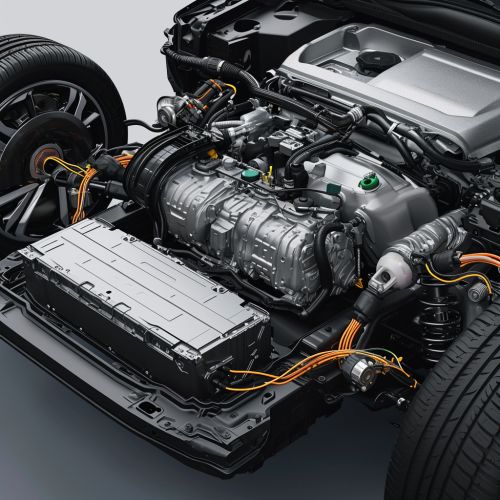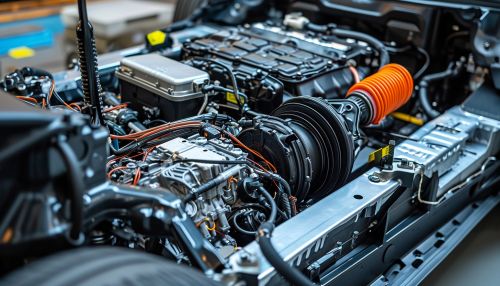Series hybrid
Overview
A series hybrid is a type of hybrid vehicle. Unlike parallel hybrids, where the electric motor and the internal combustion engine (ICE) are connected to the mechanical transmission and can simultaneously transmit power to drive the wheels, in a series hybrid, only the electric motor drives the wheels. The ICE is used solely to generate electricity to recharge the battery pack, which powers the electric motor. This configuration is also known as a range-extended electric vehicle (REEV).


Design and Operation
The design of a series hybrid vehicle involves several key components: an internal combustion engine, a generator, a battery pack, an electric motor, and a controller. The ICE in a series hybrid is not connected to the wheels. Instead, it is connected to a generator, which produces electricity. This electricity is either sent directly to the electric motor, stored in the battery pack for later use, or both.
The controller in a series hybrid vehicle manages the flow of electricity between the generator, the battery pack, and the electric motor. It ensures that the vehicle operates as efficiently as possible, optimizing fuel consumption and battery charge. The controller also manages the operation of the ICE, starting and stopping it as needed to maintain the battery charge.
Advantages and Disadvantages
Series hybrid vehicles offer several advantages over conventional vehicles and other types of hybrid vehicles. One of the main advantages is their fuel efficiency. Because the ICE in a series hybrid operates at a relatively constant speed, it can be optimized for this operating condition, resulting in improved fuel efficiency. Additionally, the electric motor in a series hybrid can be used to recover energy during braking, further improving the vehicle's overall efficiency.
However, series hybrids also have some disadvantages. One of the main disadvantages is their complexity. The need for a generator, a battery pack, and a controller, in addition to the ICE and the electric motor, makes series hybrids more complex and potentially more expensive than conventional vehicles or parallel hybrids. Another disadvantage is the potential for decreased performance. Because the ICE in a series hybrid does not directly drive the wheels, there can be a delay in power delivery, which can affect the vehicle's performance.
Applications
Series hybrid technology is used in a variety of applications, including passenger cars, buses, and commercial vehicles. One of the most well-known examples of a series hybrid passenger car is the Chevrolet Volt, which was produced by General Motors from 2010 to 2019. In the commercial vehicle sector, series hybrids are used in applications where fuel efficiency and emissions reductions are particularly important, such as in city buses and delivery trucks.
Future Developments
The future of series hybrid technology is likely to be influenced by developments in battery technology and renewable energy. As batteries become more efficient and less expensive, the range of series hybrid vehicles is likely to increase, making them more attractive to consumers. Additionally, the use of renewable energy sources to generate the electricity used in series hybrids could further reduce their environmental impact.
